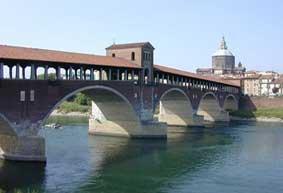


All the structures

The Lombardy province of Pavia has over seventy thousand inhabitants. Its history is closely connected with its proximity to the Ticino river: Ticinum was the name of Pavia when it was the ancient capital of the Lombard kingdom.
One of the monuments not to be missed for its beauty and history is the Basilica of San Michele.
The Basilica of San Michele was the scene of the coronation of the Carolingian kings Berengar II, Adalberto II and Emperor Frederick Barbarossa. Pavia Cathedral is surmounted by an imposing dome, the third largest in Italy. The famous Certosa monastery was built in the second half of the fourteenth century, during the rule of Gian Galeazzo Visconti, Duke of Milan.
Pavia is an historical university city. The University of Pavia is among the most prestigious in Italy.
The University of Pavia was founded by Emperor Lothario in 825. One of the oldest in Europe, its university professors have included Ugo Foscolo, Alessandro Volta and other distinguished figures of this calibre.
The province of Pavia is mainly devoted to agriculture, producing wine, rice and cereals.
The Oltrepò Pavese wine is familiar to lovers of Bacchus. Indeed, the Oltrepò Pavese area is rightly described as "shaped like a cluster of grapes".
Oltrepò Pavese consists of plains, hills and mountains. Wine production flourishes, especially in the hillside area that rises to 300m above sea level.
The Lomellina area is known for its castles and many ancient traditions.
The Lomellina is a particularly wet zone, which has encouraged the cultivation of rice, a crop of great importance to the area. Historically the Lomellina has been heavily contested by the large cities bordering it.